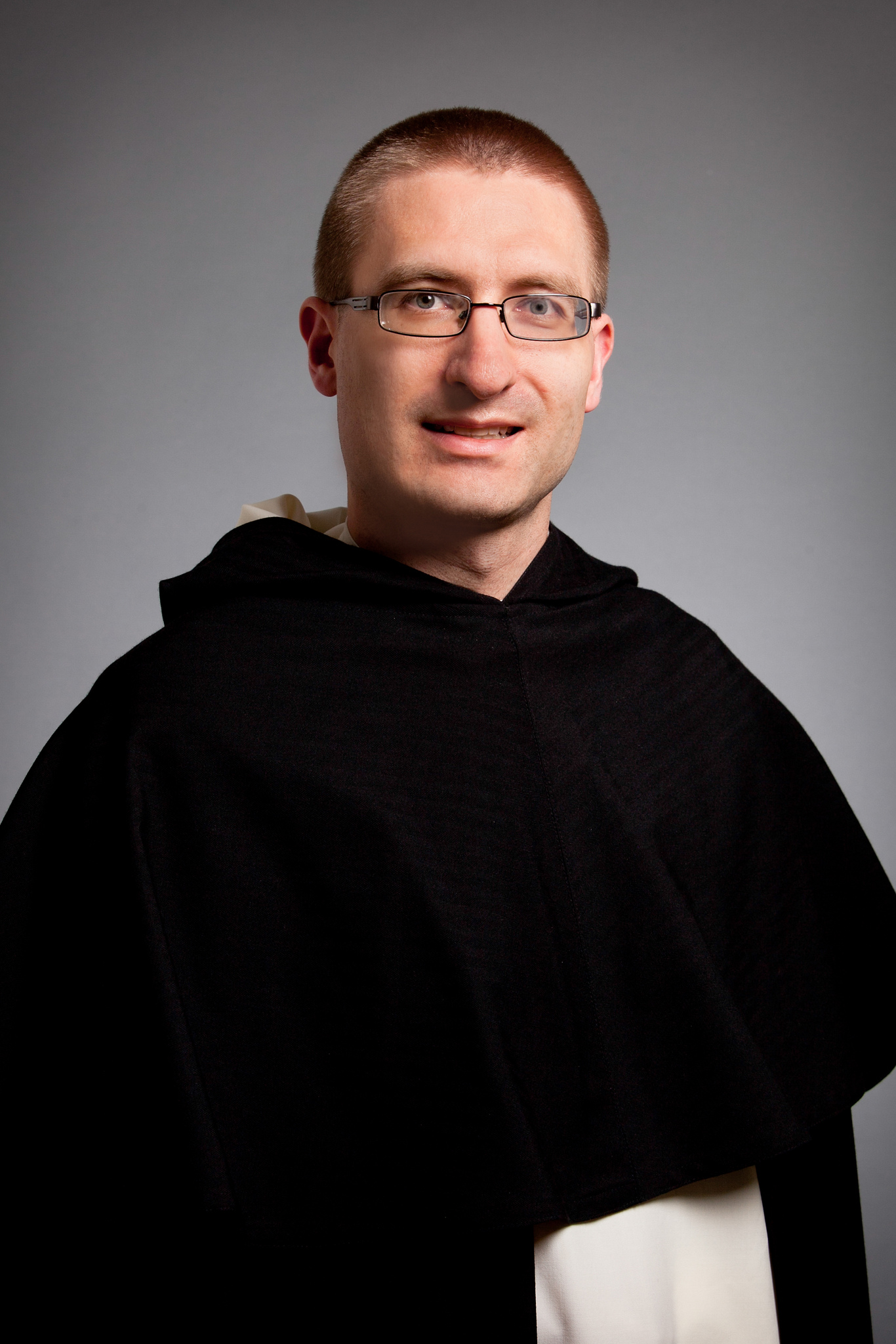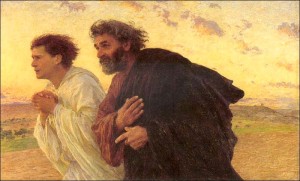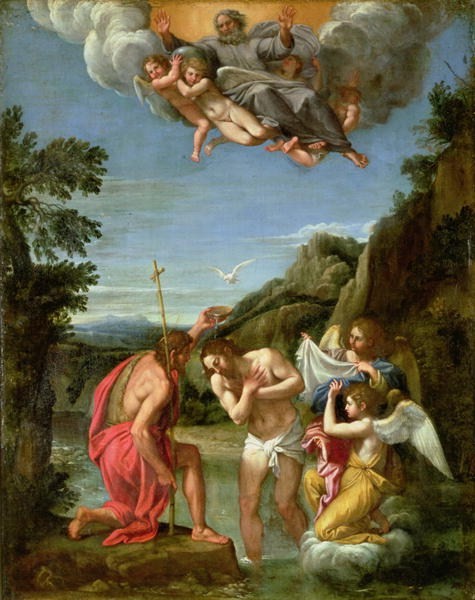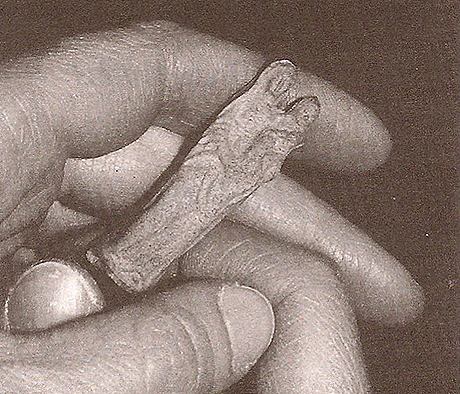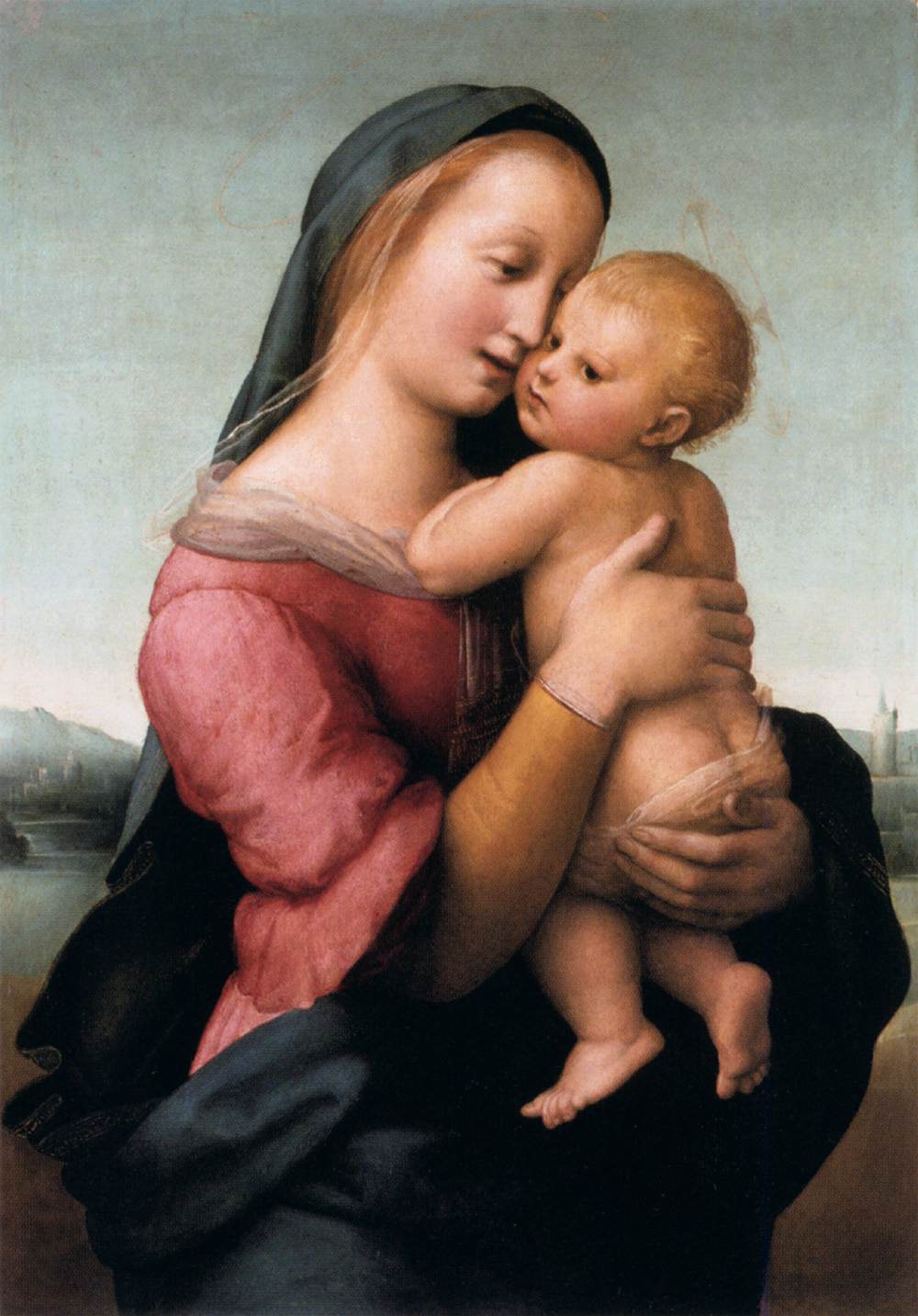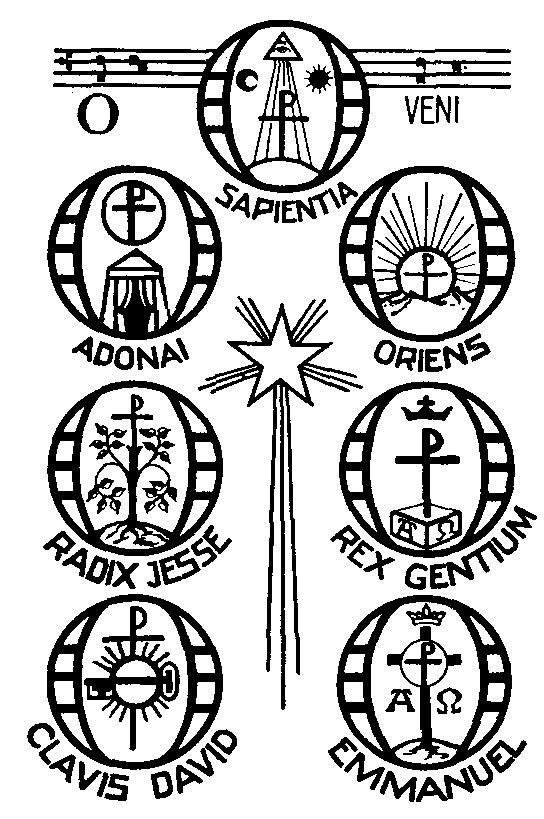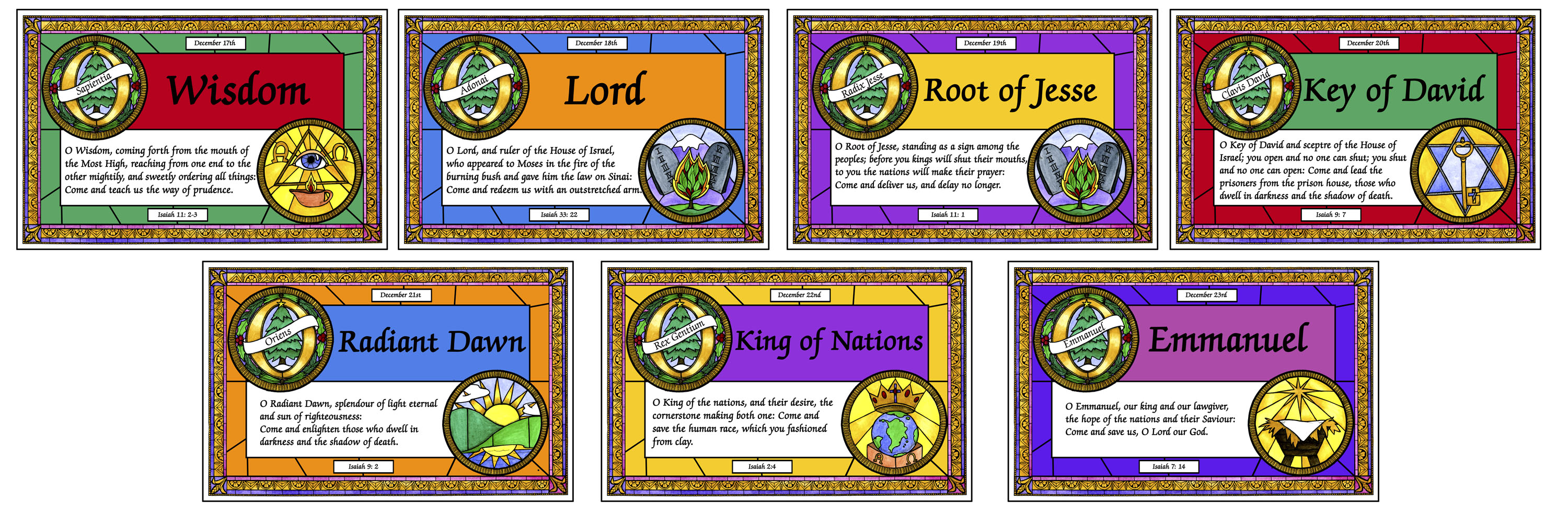(The work is in two sections, the first containing the antiphon (text: Psalm 81:17), the second the verse (text: Psalm 81:2) and doxology. For a proper liturgical performance, the first section must be repeated after the second.)
Cibávit éos ex ádipe fruménti,
allelúia:
et de pétra, mélle saturávit éos,
allelúia, allelúia, allelúia,
He fed them with the fat of wheat (alleluia);
and filled them with honey out of the rock
(alleluia, alleluia, alleluia).
Exsultáte Déo adjutóri nóstro: jubiláte Déo Jácob.
Rejoice unto God our helper; sing aloud to the God of Jacob.
Glória Pátri, et Fílio, et Spirítui Sáncto.
Sicut erat in princípio, et nunc, et semper,
et in saécula saeculórum. Amen.
Glory be to the Father, and to the Son,
and to the Holy Ghost; as it was in the beginning,
is now, and ever shall be, world without end. Amen.
Cibávit éos ex ádipe fruménti, allelúia:
et de pétra mélle saturávit éos,
allelúia, allelúia, allelúia,
He fed them with the fat of wheat (alleluia);
and filled them with honey out of the rock
(alleluia, alleluia, alleluia).
“A recent book, “American Catholics in Transition”, drawing on numerous surveys conducted over a period of twenty-five years, reports that 37% of self-identified Catholics in America do not believe in the real presence of Christ in the Eucharist. Significantly, however, only 4% claim that they both know and disbelieve the Church’s teaching. The great majority of unbelievers in the real presence—1 in 3 of self-identified Catholics—claims not to know what the Church teaches on the subject: namely, that the bread and wine are really changed into the body and blood of Christ.
The liturgical calendar provides us with an opportunity to reflect on this mystery. The Feast of Corpus Christi (“the Body of Christ”) was instituted in the thirteenth century in order to foster a greater appreciation of the Lord’s presence in the Eucharist. In the U.S. it occurs this Sunday, though in other countries it happens today, the Thursday after Trinity Sunday, as a kind of second Holy Thursday (the day of the Last Supper).
The Gospel reading for Corpus Christi is John 6:51-58. The passage follows the multiplication of the loaves and consists mainly of Jesus’ response to a request from the crowd: “Sir, give us always [the bread of God . . . which comes down from heaven and gives life to the world]” (Jn 6:33-34). Jesus’ answer is clear and emphatic: “I am the living bread that came down from heaven . . . and the bread that I will give is my flesh for the life of the world” (6:51). Jesus is insistent about this. In the eight verses of the liturgical text (which is only a selection from a larger passage), words meaning “eat” and “drink” appear a total of ten times, and the words “food” and “bread” occur six times in sum. Jesus persistently associates these words with himself, with his “flesh” (six times) and with his “blood” (four). Eventually he adds the adjective “true”: “my flesh is true food, and my blood is true drink” (6:55).
Jesus also uses different words for “eat.” In the first part of the passage, he uses a more generic term, which was used to denote the eating of a meal or metaphorical consumption, e.g., the devouring of books. In the second part, however, he begins to use a verb that means “gnaw” or “chomp.” Presumably, Jesus is driving home his point. What’s required is not only spiritual assimilation, but also oral ingestion. The eating that Jesus is talking about is bodily; it’s animalistic. The translation in the Lectionary hints at this animality in verse 57: “the one who feeds on me will have life . . .”
Some of Jesus’ disciples objected to the idea that they should eat his body and drink his blood. They said, “This saying is hard; who can accept it?” (6:60). Many were so repelled that they stopped following him altogether: “[they] returned to their former way of life and no longer accompanied him” (6:66). But Jesus did not run after them trying to explain that he was only speaking symbolically. Still less did he open the doctrine up for negotiation. He simply turned to the Twelve and asked, “Do you also want to leave?” (6:67).
Perhaps the defectors thought Jesus was proposing a straightforward cannibalism, such as one might imagine about the worst pagans, such as might have existed among neighboring pagans. Maybe some would object that Jesus was too concerned about “externals.” Today people might say that they don’t go to Church because they go to God “directly,” from home or from anywhere. The Christian claim is that God has already come to us directly in Christ, who declared, “Unless you eat the flesh of the Son of Man and drink his blood, you do not have life within you” (6:53). Now, ingesting the Son of Man is not normally something people can do at home. So Jesus is inviting us to Church: “Whoever eats my flesh and drinks my blood has eternal life” (6:54). These are the options he gives us: no life or eternal life.
The Eucharist contains “the whole spiritual good of the Church, namely Christ himself” (Catechism of the Catholic Church, 1324). This great gift is offered to us as a sacrament, that is, as a sacred, saving sign. But unlike some other signs (for instance, a photo of a loved one), in the case of the Eucharist, the sign literally involves the real presence of Christ in his humanity and divinity. This is why Catholics genuflect and kneel in the presence of the Eucharist. And this is the reason for the adoration of the Blessed Sacrament which is characteristic of celebrations of Corpus Christi. After the consecration, there is no longer any bread or wine on the altar. Jesus is there under the appearances of bread and wine, offering Himself for the life of the world.”
“I was once, five or six years ago, taken by some friends to have dinner with Mary McCarthy and her husband, Mr. Broadwater. (She just wrote that book, “A Charmed Life.”) She departed the Church at the age of 15 and is a Big Intellectual. . . . Having me there was like having a dog present who had been trained to say a few words but overcome with inadequacy had forgotten them.
Well, toward morning the conversation turned on the Eucharist, which I, being the Catholic, was obviously supposed to defend. Mrs. Broadwater said when she was a child and received the host, she thought of it as the Holy Ghost, He being the most portable person of the Trinity; now she thought of it as a symbol and implied that it was a pretty good one. I then said, in a very shaky voice, Well, if it’s a symbol, to hell with it.
That was all the defense I was capable of but I realize now that this is all I will ever be able to say about it, outside of a story, except that it is the center of existence for me; all the rest of life is expendable.” -Flannery O’Connor, in a letter to Elizabeth Hester
“God in His omnipotence could not give more, in His wisdom He knew not how to give more, in His riches He had not more to give, than the Eucharist.” – Saint Augustine
“Take note of those who hold heterodox opinions on the grace of Jesus Christ which has come to us, and see how contrary their opinions are to the mind of God. . . . They abstain from the Eucharist and from prayer because they do not confess that the Eucharist is the flesh of our Savior Jesus Christ. . . . They who deny the gift of God are perishing in their disputes.” –St Ignatius of Antioch (Letter to the Smyrnaeans 6:2-7:1 [A.D. 110]).
“We call this food Eucharist. . . . For not as common bread nor common drink do we receive these; but since Jesus Christ our Savior was made incarnate by the word of God and had both flesh and blood for our salvation, so too, as we have been taught, the food which has been made into the Eucharist by the eucharistic prayer set down by him, and by the change of which our blood and flesh is nurtured, is both the flesh and the blood of that incarnated Jesus.” –St Justin Maryr (First Apology 66 [A.D. 151]).
Love,
Matthew





